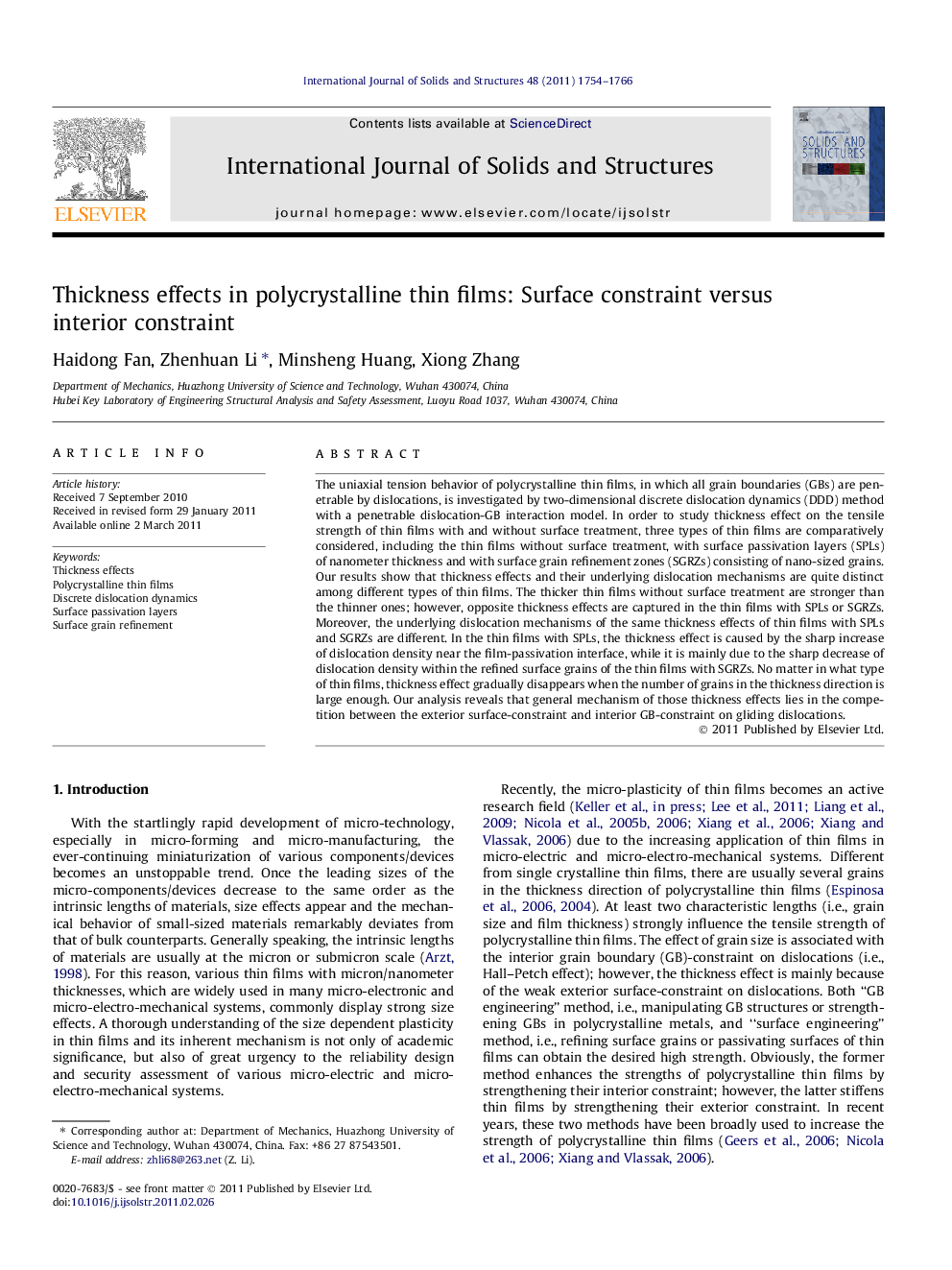| Article ID | Journal | Published Year | Pages | File Type |
|---|---|---|---|---|
| 278330 | International Journal of Solids and Structures | 2011 | 13 Pages |
The uniaxial tension behavior of polycrystalline thin films, in which all grain boundaries (GBs) are penetrable by dislocations, is investigated by two-dimensional discrete dislocation dynamics (DDD) method with a penetrable dislocation-GB interaction model. In order to study thickness effect on the tensile strength of thin films with and without surface treatment, three types of thin films are comparatively considered, including the thin films without surface treatment, with surface passivation layers (SPLs) of nanometer thickness and with surface grain refinement zones (SGRZs) consisting of nano-sized grains. Our results show that thickness effects and their underlying dislocation mechanisms are quite distinct among different types of thin films. The thicker thin films without surface treatment are stronger than the thinner ones; however, opposite thickness effects are captured in the thin films with SPLs or SGRZs. Moreover, the underlying dislocation mechanisms of the same thickness effects of thin films with SPLs and SGRZs are different. In the thin films with SPLs, the thickness effect is caused by the sharp increase of dislocation density near the film-passivation interface, while it is mainly due to the sharp decrease of dislocation density within the refined surface grains of the thin films with SGRZs. No matter in what type of thin films, thickness effect gradually disappears when the number of grains in the thickness direction is large enough. Our analysis reveals that general mechanism of those thickness effects lies in the competition between the exterior surface-constraint and interior GB-constraint on gliding dislocations.
